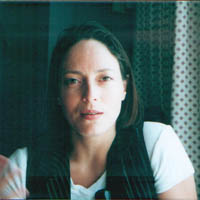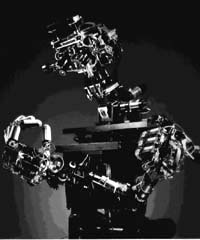Everything is up for grabs. Everything will change. There is a magnificent sweep of intellectual landscape right in front of us.
Introduction
By John Brockman
David Gelernter .....
"...prophesied the rise of the World Wide Web. He understood the idea half a decade before it happened." (John Markoff)
"...is a treasure in the world of computer science...the most articulate and thoughtful of the great living practitioners" (Jaron Lanier)
"...is one of the pioneers in getting many computers to work together and cooperate on solving a single problem, which is the future of computing." (Danny Hillis)
"...is one of the most brilliant and visionary computer scientists of our time." (Bill Joy)
Yale computer scientist David Gelernter entered the public mind one morning in January '92 when The New York Sunday Times ran his picture on the front page of the business section; it filled nearly the whole page. The text of the accompanying story occupied almost another whole page inside.
In 1991 Gelernter had published a book for technologists (an extended research paper) called Mirror Worlds, claiming in effect that one day, there would be something like the Web. As well as forecasting the Web, the book, according to the people who built these systems, also helped lay the basis for the internet programming language "Java" and Sun Microsystems' "Jini."
Gelernter's earlier work on his parallel programming language "Linda" (which allows you to distribute a computer program across a multitude of processors and thus break down problems into a multitude of parts in order to solve them more quickly) and "tuple spaces" underlies such modern-day systems as Sun's JavaSpaces, IBM's T-Spaces, a Lucent company's new "InfernoSpaces" and many other descendants worldwide.
By mid-'92 this set of ideas had taken hold and was exerting a strong influence . By 1993 the Internet was growing fast, and the Web was about to be launched. Gelernter's research group at Yale was an acknowledged world leader in network software and more important, it was known for "The Vision Thing", for the big picture.
In June '93 everything stopped for Gelernter when he was critically injured by a terrorist mailbomb. He was out of action for the rest of '93 and most of '94 as the Web took off, the Internet become an international phenomenon and his aggressive forecasts started to come true. Gelernter endured numerous surgeries through 95, and then a long recuperation period.
Now Gelernter is back. In this audacious manifesto, "The Second Coming", he writes: "Everything is up for grabs. Everything will change. There is a magnificent sweep of intellectual landscape right in front of us.""
-JB
DAVID GELERNTER, Professor of Computer Science at Yale University and adjunct fellow at the Manhattan Institute, is a leading figure in the third generation of Artificial Intelligence scientists, known for his programming language called "Linda" that made it possible to link computers together to work on a single problem. He has since emerged as one of the seminal thinkers in the field known as parallel, or distributed, computing.
He is the author of Mirror Worlds (1991), The Muse In The Machine (1994), 1939: The Lost World Of The Fair (1995), And Drawiing A Life: Surviving The Unabomber (1998).
David Gelernter's Edge Bio Page
THE REALITY CLUB: Stewart Brand, David Ditzel, John C. Dvorak, Feeman Dyson, George Dyson, Douglas Rushkoff, Rod Brooks, Lee Smolin, Jaron Lanier, David Farber, Danny Hillis, Vinod Kholsa, John McCarthy on "The Second Coming - A Manifesto" by David Gelernter

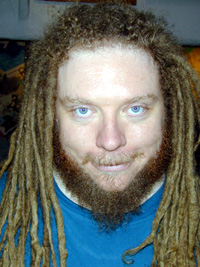
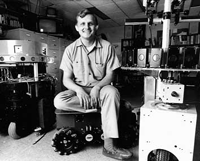
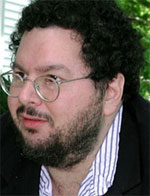
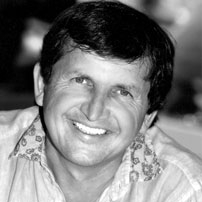
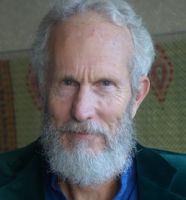
 CODE is an attempt to get at the foundational issues of the digital age. George Dyson has a biological approach and I have my own points to make based on an engagement with the founders of cybernetics that began in 1965. We are joined in the conversation by chaos and complexity theorist J, Doyne Farmer, biologist Steven R. Quartz, digital edtior of The Economist Tom Standage, and mathematician and software pioneer Charles Simonyi, creator of the WYSYWYG word processor.
CODE is an attempt to get at the foundational issues of the digital age. George Dyson has a biological approach and I have my own points to make based on an engagement with the founders of cybernetics that began in 1965. We are joined in the conversation by chaos and complexity theorist J, Doyne Farmer, biologist Steven R. Quartz, digital edtior of The Economist Tom Standage, and mathematician and software pioneer Charles Simonyi, creator of the WYSYWYG word processor.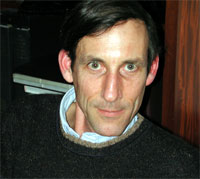 GEORGE DYSON is a leading authority in the field of Aleut-Russian kayaks, and his work has been a subject of the PBS television showScientific American Frontiers. He is the author of Baidarka, Darwin Among The Machines, and Turing's Cathedral.
GEORGE DYSON is a leading authority in the field of Aleut-Russian kayaks, and his work has been a subject of the PBS television showScientific American Frontiers. He is the author of Baidarka, Darwin Among The Machines, and Turing's Cathedral.